Scientific seminar: Towards an integrated ecology of infrastructures: cross-examinations on the management of green dependencies
The SAGID+ chair organized a day of scientific exchanges around the theme of roadside management
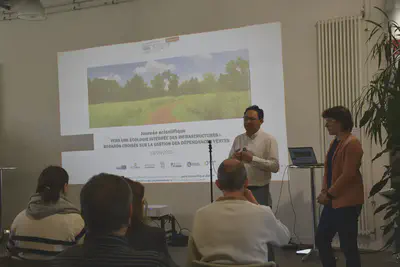
On Wednesday, May 13, the first scientific seminar organized as part of the SAGID+ chair took place. Held at the Lorraine Fab Living Lab, this seminar brought together around thirty participants — scientists, territorial managers, and industry professionals — around the topic of roadside management. The day’s program was as follows:
✔ Conferences (9:00 AM – 12:30 PM): Expert talks on the ecological management of road and rail infrastructure.
✔ Interactive workshops (1:30 PM – 3:30 PM): Discussions on the impact of maintenance practices on fauna and flora, and user testing of a decision-support tool for roadside management.
✔ Roundtable (3:45 PM – 4:15 PM): Collective reflection on the topics addressed throughout the day.
During the morning, several subject-matter experts gave presentations on their work:
- Beyond Ecology: Multidisciplinary Approaches for the Sustainable Management of Green Spaces by Denis François (Université Gustave Eiffel)
Denis François emphasized the need for a truly multidisciplinary approach, integrating ecological, social, economic, and technical dimensions. He presented results from various projects he has been involved in, which illustrated these different aspects.
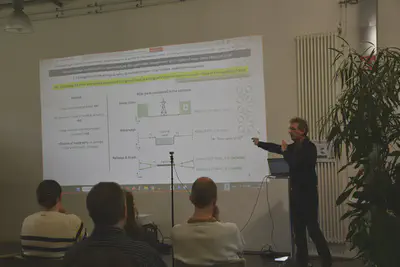
Feedback on Road Ecology in Switzerland by Marguerite Trocmé (Federal Roads Office)
Marguerite Trocmé, environmental manager, shared insights from her 17-year career at the Swiss Federal Roads Office. Her presentation highlighted the challenges and actions taken in roadside management, covering organizational issues, maintenance practices, and equipment-related concerns.Bioengineering Principles for Roadside Biodiversity Conservation by Henrich Reck (Kiel University)
Professor Heinrich Reck presented research on the use of rhinanthus plants to control vegetation height without mechanical intervention. The study showed positive results in managing vegetation height and supporting pollinator insects. The main challenge lies in maintaining rhinanthus populations over time, as the species is highly sensitive to maintenance and other unidentified factors. According to Reck, the fact that this technique doesn’t work in all settings might actually be beneficial from a biodiversity conservation standpoint.
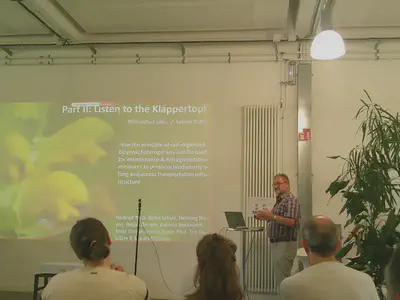
Roadsides: A Reservoir of Biodiversity? by Clémence Chaudron (Université de Lorraine – AgroParisTech)
Clémence Chaudron presented her research on the impact of maintenance practices on roadside and field edge biodiversity, highlighting both the potential and fragility of these areas with regard to management strategies.Invasive Plant Management on the Railway Network by Marie-Anne Dusz (INRAE) & Anne Petit (SNCF)
The two speakers shared the results of a long-term experimental project on controlling Japanese knotweed using tarping, conducted jointly by SNCF and INRAE. The experiment demonstrated the effectiveness of this method in eradicating large knotweed patches. Results also outlined success conditions and the soil impact after treatment. It was shown that post-treatment soil biodiversity was relatively poor, prompting discussions on follow-up actions. Questions remain about the cost and feasibility of scaling this method for broader use, suggesting it may be limited to high-sensitivity areas.
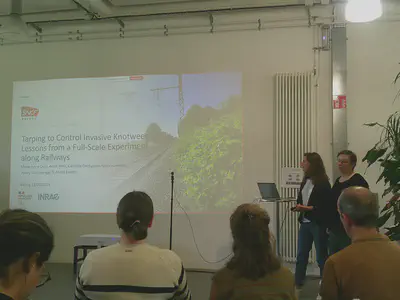
- Viewing the Roadside as an Ecosystem by Ziadany Mayoral (Université de Lorraine)
Ziadany Mayoral, a PhD student under the SAGID+ chair, presented the progress of her thesis based on literature review. Her work models the roadside as an ecosystem where interactions between human activities and biotic/abiotic components are highlighted. She presented the theoretical concepts used and their relevance to the proposed model.
After a cold buffet lunch, the seminar continued with two parallel workshops:
Methodological Reflection: How Do Maintenance Practices Influence Ecosystem Services?
This workshop, led by Ziadany Mayoral and Clémence Chaudron, aimed to contribute to Axis 1 of the SAGID+ project.
It provided an opportunity for managers and researchers to reflect on how to account for ecosystem services delivered by roadsides.
Such exchanges offer a multidisciplinary perspective on the challenges surrounding roadside ecosystem services, helping to guide the next steps of the thesis with broader awareness of potential evaluation limits.
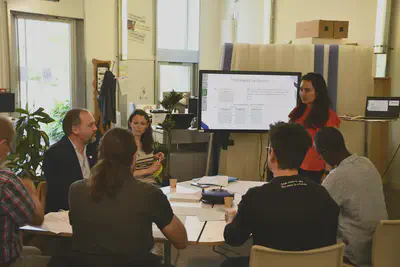
Towards a Decision-Support Tool for Roadside Management
Led by Brice Corrigeux, a research engineer on the SAGID+ project, this workshop aimed to test the developing decision-support tool with future users — both professionals and those unfamiliar with the field.
The workshop gathered valuable feedback and improvement ideas, marking a new step in co-developing this digital tool.
While still in development, the feedback was overall very positive, particularly concerning the interface and features. The current direction is validated, and further developments and research outcomes will continue to build on this foundation.
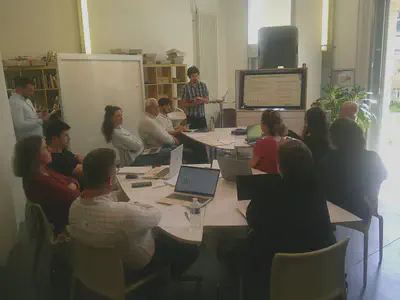
To close the day, participants attended a concluding roundtable moderated by Mauricio Camargo. During this session, Marguerite Trocmé, Denis François, and Heinrich Reck were invited to discuss institutional, organizational, and operational challenges involved in transforming green verges into levers for ecological compensation/regeneration of territories. Special emphasis was placed on the need to popularize knowledge and train field actors to ensure the success of these new approaches.
